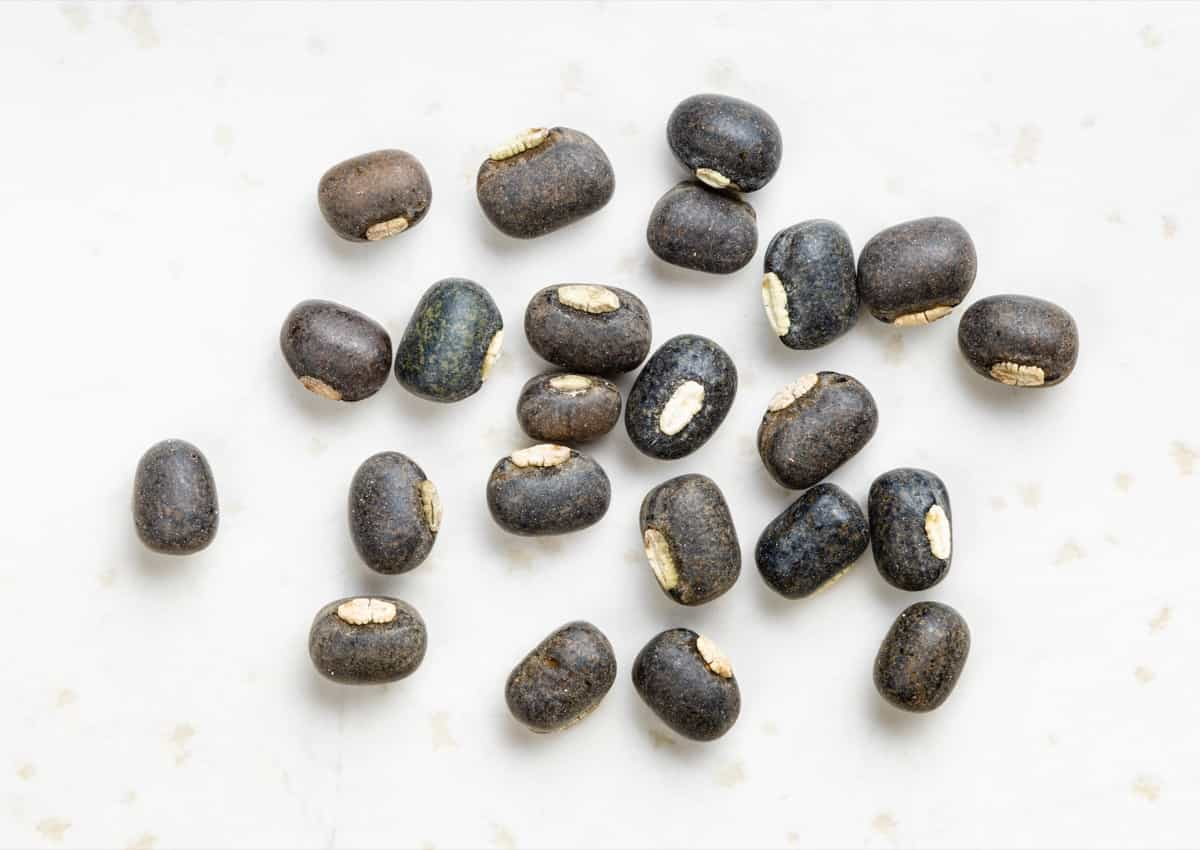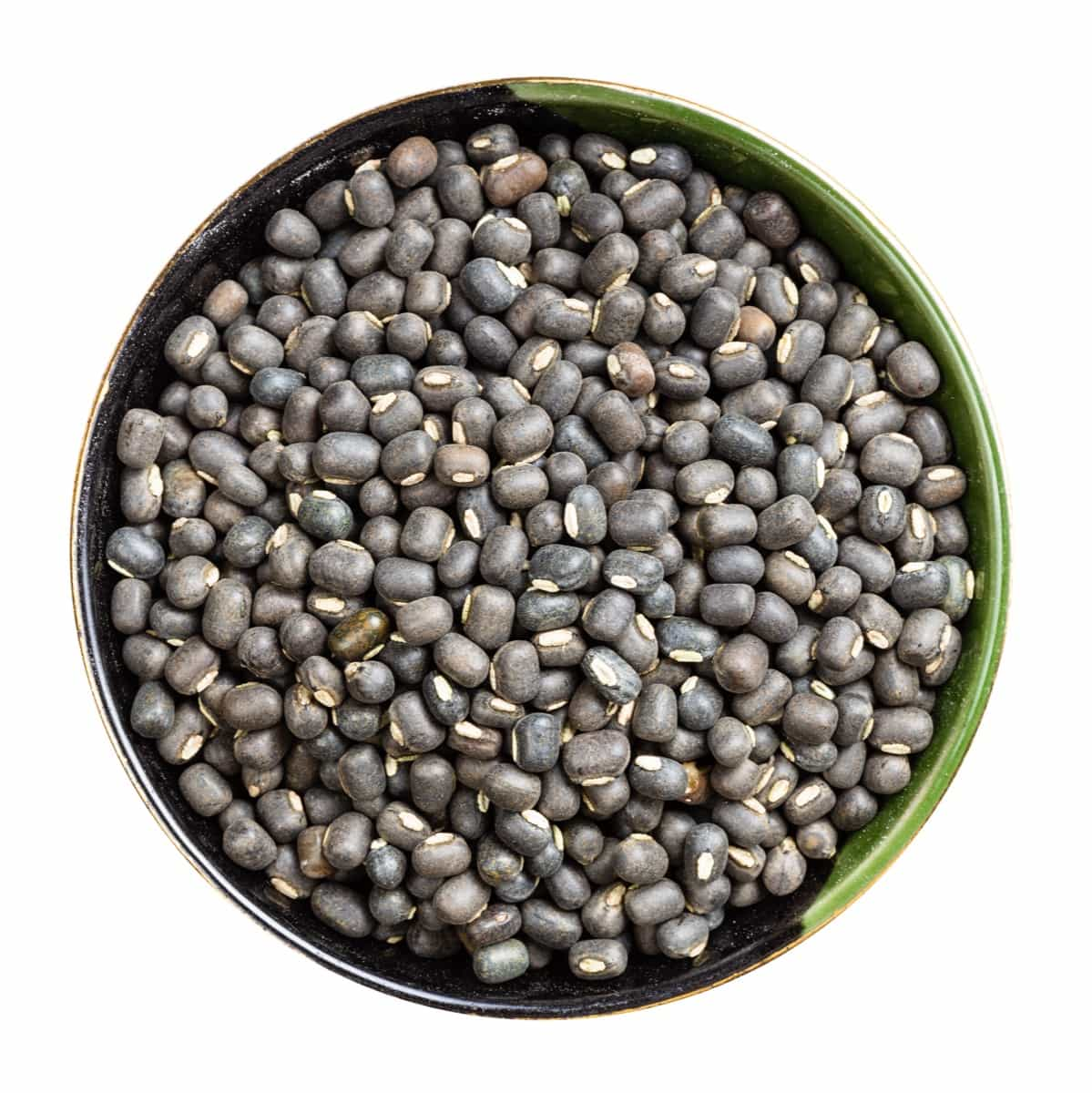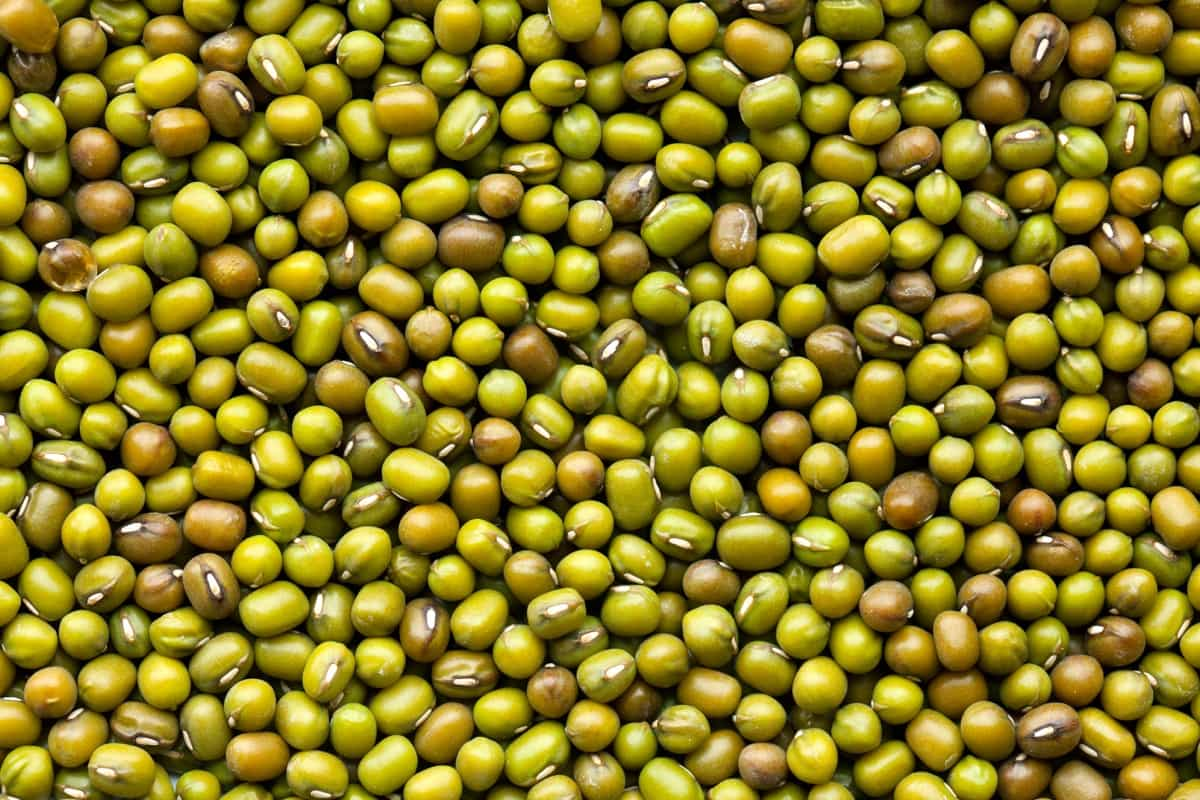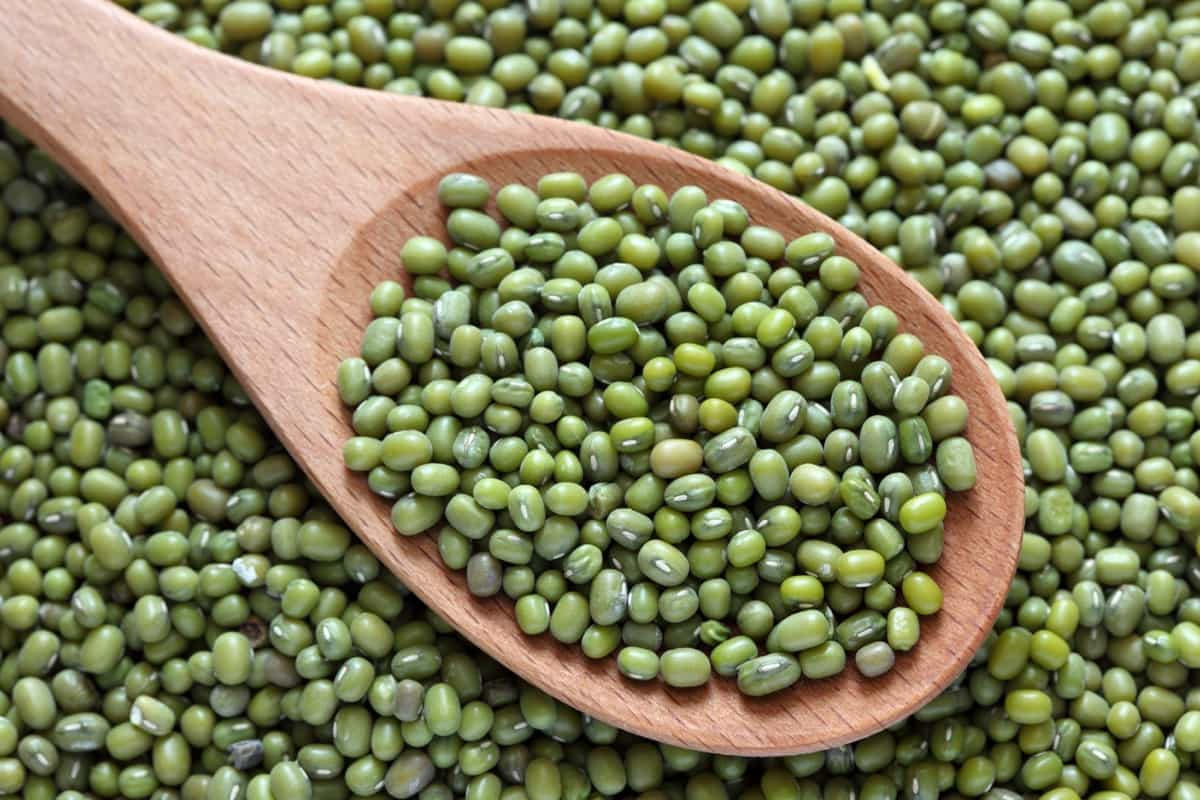Welcome to our insightful exploration of Black Gram and Green Gram varieties, tailored for both the Kharif and Rabi seasons. This post delves into the diverse types of these nutritious pulses, highlighting their unique characteristics and suitability for different climatic conditions. Whether you’re a farmer seeking the best crop options or a curious reader interested in agronomy, this guide provides a clear and straightforward overview of these vital legumes, ensuring a rich understanding of their cultivation and importance in sustainable agriculture.

Black Gram and Green Gram Varieties
Green Gram (Moong) Farming Best Practices
Climate and Soil Requirements
- Climate Adaptability: Green gram thrives in hot and warm climates, with an ideal annual rainfall of 60 to 75 cm. It’s a hardy crop, capable of withstanding drought to a significant extent, making it suitable for diverse climatic conditions.
- Soil Preference: It grows best in well-drained soils like sandy loam to black cotton soils. Avoid saline, alkaline, or waterlogged conditions.
Field Preparation
- Plowing and Harrowing: Start with one or two ploughings, followed by cross-harrowing and planking. Ensure the field is level and free from weeds.
- Soil Moisture: In the summer, prepare the field at Vapsa conditions (optimal soil moisture), ensuring minimal moisture loss.
Sowing
- Timing: Sow at the onset of monsoon for the Kharif season and during late February to early March for the summer crop.
- Method: Use a seed drill or local plow for sowing.
- Seed Treatment: Treat seeds with Thiram or Captan (2-3 g/kg) for disease prevention and consider rhizobium strain treatment for first-time crops.
- Spacing and Depth: Maintain a spacing of 45 cm x 10 cm (Kharif) or 30 cm x 10 cm (Rabi and Summer), sowing seeds at a depth of 5-7 cm.
In case you missed it: Pest and Disease Management in Red Gram: Causes, Symptoms, Chemical, and Biological Control

Fertilization
- Organic and Inorganic Fertilizers: Apply 10-15 CL/ha of well-decomposed FYM along with basal application of N, P2O5, and sometimes K2O, adjusting for soil types.
- Sulfur Application: In sulfur-deficient soils, apply 20 kg/ha of sulfur.
Irrigation
- Rainfed Crop: Natural rainfall usually suffices, but proper drainage is critical.
- Summer Crop: Requires 5-6 irrigations, with the first at 20-25 days after sowing (DAS) and subsequent ones every 12-15 days. Avoid irrigation during full bloom.
Weeding and Intercultural
Weed Management: Conduct 1-2 interculturings and weedings at 20 and 45 DAS. Consider herbicides like Fluchloralin or Pendimethalin in rain-heavy areas.
Plant Protection
- Pests: Control aphids, jassids, whiteflies, and pod borers through integrated pest management.
- Diseases: Manage issues like yellow mosaic and leaf crinkle by crop rotation and using resistant varieties.
Harvesting: Harvest when pods turn black. Conduct 2-3 pickings, preferably in the morning. Thresh in a yard for seed separation and cleaning.
Green Gram (Moong) Varieties for Kharif Season
- Gujarat Mung 4: This variety is suitable for cultivation in Gujarat. It is resistant to yellow mosaic virus, Cercospora leaf spot, and powdery mildew diseases. It matures in 65-70 days and yields 12-14 quintals per hectare.
- Varsha: This variety is suitable for cultivation in the north-western plains zone. It is resistant to yellow mosaic virus, Cercospora leaf spot, and anthracnose diseases. It matures in 70-75 days and yields 10-12 quintals per hectare.
- Pant Mung 5: This variety is suitable for cultivation in Assam, Bihar, and Jharkhand. It is resistant yellow mosaic virus, anthracnose, and web blight diseases. It matures in 80-85 days and yields 14-16 quintals per hectare.
- Gujarat Moong-1: Maturing in 70-80 days, it’s suitable for North Gujarat. It’s mainly grown in the Kharif season.
- Sabarmati: With a maturity period of 70-75 days, it’s ideal for both Kharif and summer cultivation.
- K-851: Maturing in 65-70 days, it’s suitable across the state for Kharif and summer, with synchronous maturity.
In case you missed it: Pest and Disease Management in Black Gram: Causes, Symptoms, Chemical, and Biological Control

Green Gram (Moong) Varieties for Rabi Season
- Pusa Baisakhi: This variety is suitable for cultivation in the north-western plains zone. It is resistant to yellow mosaic virus and powdery mildew diseases. It matures in 60-65 days and yields 8-10 quintals per hectare.
- LGG-460: This variety is suitable for cultivation in Andhra Pradesh. It is resistant to yellow mosaic virus and cercospora leaf spot diseases. It matures in 65-70 days and yields 10-12 quintals per hectare.
- HUM-16: This variety is suitable for cultivation in Assam, Bihar, and Jharkhand. It is resistant to yellow mosaic virus and anthracnose diseases. It matures in 75-80 days and yields 12-14 quintals per hectare.
- C.O.4: This is a Rabi-specific variety known for its medium to mid-late maturity.
- Mohini & Jawahar-45: These varieties are known for their adaptability to different climatic conditions and can be grown in the Rabi season.
Black Gram (Urad) Farming Best Practices
Black gram, also known as Urad, is a resilient pulse crop integral to the Indian diet and agriculture. Its ability to fix atmospheric nitrogen improves soil fertility, making it an environmentally sustainable choice.
In case you missed it: Top 16 Steps to Boost Chickpea/Bengal Gram Yield: How to Increase Production, Quality, and Tips

Climate and Soil Requirements
- Climate Adaptability: Black gram is versatile, growing well during the Kharif season across India. In Rabi, it’s best in rice fallows in southern and southeastern India. It needs heavier soil than a green gram.
- Soil Preference: Ideal in well-drained loam with a pH of 6.5 to 7.8. Avoid alkaline and saline soils.
Varieties
- Resistance to Diseases and Pests: Choose varieties like Pant U – 19, Sarala, TAU – 2, and KBG – 512 for resistance to Yellow Mosaic Virus, Powdery Mildew, and pests.
- Regional Suitability: Varieties like LBG 17 are suitable for Rabi in the south, while PDU 1 and Mash 414 are good for the spring season.
Seed Treatment
- Biological and Chemical Treatment: Use Rhizobium and PSB for nitrogen fixation and Carbendazim and Thiram for disease prevention. Carbofuran treatment is beneficial against nematodes.
Sowing
- Timing: Mid-June for Kharif, considering moisture availability. In Rabi and spring, the timing varies regionally.
- Seed Rate and Spacing: Use 15-20 kg/ha for Kharif and 25-30 kg/ha for Rabi or spring. Row spacing should be 30-35 cm for Kharif and 25 cm for Rabi or Spring.
Fertilization
- NPK and Sulphur: Apply 20:40:20 NPK kg/ha with 20 kg S/ha. Zinc application (25 kg/ha) is crucial for deficient soils, and Boron and Molybdenum benefit acid soils.
- Foliar Sprays: Use 2% DAP and 2% KCl at the pre-flowering stage for better yields.
Intercultural and Weed Management
- Weed Control: Early weeding (2-3 weeks after sowing) is essential. Use Pendimethalin or Metalachlor for effective control. Line sowing facilitates hoeing and weeding.
- Weeding and Hoeing Schedule: Perform these operations at 25-30 days and, if needed, again at 45 days after sowing.
Irrigation
- Water Management: In Rabi and Pre-Rabi, rely on residual soil moisture—Irrigate at critical stages like flowering and pod development.
Plant Protection
- Disease and Pest Control: Address yellow mosaic and powdery mildew with specific strategies, including soil application of Phorate. For pests like pod borers and aphids, use appropriate insecticides like Triazophos or Methyl Demeton.
In case you missed it: Top 15 Steps to Boost Black Gram Yield: How to Increase Quality and Production

Harvesting, Threshing, and Storage
- Harvest Timing: Harvest when 70-80% of pods mature. Avoid over-maturity to prevent seed shattering.
- Threshing and Storage: Thresh manually or mechanically, ensuring seeds are sun-dried to 8-10% moisture for safe storage.
Yield Enhancement Recommendations
- Deep Summer Ploughing: Once every three years to enhance soil health.
- Seed Treatment: Always treat seeds before sowing.
- Fertilizer Application: Base it on soil test values.
- Sowing Method: In Kharif, use the ridge and furrow method.
- Varietal Selection: Choose yellow mosaic-resistant varieties like Uttara or Shekhar 3 according to regional suitability.
- Integrated Plant Protection: Adopt a holistic approach for pest and disease management.
Black Gram (Urad) Varieties for Kharif Season
- IPU 94 – 1 (Uttara): This variety is resistant to yellow mosaic virus (YMV), Cercospora leaf spot (CLS), and powdery mildew (PM). It yields about 10-11 quintals per hectare and matures in 80-85 days. It is suitable for Uttarakhand kharif season.
- Shekhar 3 (KU 309): This variety is also resistant to YMV, CLS, and PM. It yields about 12-13 quintals per hectare and matures in 75-80 days. It is suitable for the Madhya Pradesh kharif season.
- Ujala (OBJ 17): This variety is tolerant to YMV and resistant to PM. It yields about 9-10 quintals per hectare and matures in 70-80 days. It is suitable for the Madhya Pradesh kharif season.
- VBN (Bg) 7: This variety is resistant to YMV, anthracnose, and PM. It yields about 12-13 quintals per hectare and matures in 70-75 days. It is suitable for Tamil Nadu and can be grown in all seasons.
- Pratap urd 1: This variety is resistant to YMV, CLS, and PM. It yields about 10-11 quintals per hectare and matures in 80-85 days. It is suitable for the north-western plains zone (Punjab, Haryana, Uttar Pradesh, and Uttarakhand).
- LBG-20 (Teja): This variety is resistant to YMV, CLS, anthracnose, and PM. It yields about 12-14 quintals per hectare and matures in 75-80 days. It is suitable for all seasons of cultivation in Andhra Pradesh, Telangana, Karnataka, Maharashtra, and Gujarat.
- T-9: This variety is resistant to YMV, CLS, and PM. It yields about 10-12 quintals per hectare and matures in 70-75 days. It is suitable for all seasons of cultivation in Andhra Pradesh, Telangana, Karnataka, Maharashtra, and Gujarat.
- LBG-623: This variety is resistant to YMV, CLS, and PM. It yields about 11-13 quintals per hectare and matures in 75-80 days. It is suitable for all seasons of cultivation in Andhra Pradesh, Telangana, Karnataka, Maharashtra, and Gujarat.
Black Gram (Urad) Varieties for Rabi Season
- LBG-20 (Teja): This variety is resistant to yellow mosaic virus (YMV) and has a yield potential of 12-15 quintals per hectare. It matures in 75-80 days and has black seeds with green pods.
- PDU 1: This variety is resistant to powdery mildew and has a yield potential of 10-12 quintals per hectare. It matures in 70-75 days and has black seeds with purple pods.
- Pant U – 19: This variety is also resistant to YMV and has a yield potential of 15-18 quintals per hectare. It matures in 85-90 days and has black seeds with green pods.
- Pant U – 30 Sarala: This variety is tolerant to drought and salinity and has a yield potential of 12-14 quintals per hectare. It matures in 80-85 days and has black seeds with green pods.
- Jawahar urd – 2: This variety is suitable for rainfed conditions and has a yield potential of 8-10 quintals per hectare. It matures in 65-70 days and has black seeds with green pods.
- ADT – 4: This variety is suitable for irrigated conditions and has a yield potential of 14-16 quintals per hectare. It matures in 75-80 days and has black seeds with green pods.
- Birsa Chana-3: This variety is suitable for upland areas and has a yield potential of 10-12 quintals per hectare. It matures in 70-75 days and has black seeds with green pods.
- PG-186: This variety is suitable for lowland areas and has a yield potential of 12-14 quintals per hectare. It matures in 80-85 days and has black seeds with brown pods.
In case you missed it: Best Fertilizer for Green Gram: Organic, NPK, Biofertilizer, and Application

Central and State-Released Varieties of Blackgram/Urdbean in India
Central Released Varieties
- LBG 787 (Tulasi) – 2016: Developed at ARS, Lam. It matures in 70-75 days and is suitable for the Southern Zone (SZ), including Tamil Nadu, Andhra Pradesh, Karnataka, Telangana, and Andaman & Nicobar. It is resistant to Powdery Mildew and ideal for rice fallows and post-Rabi paddy in summer.
- VBN 8 – 2018: From NPRC, Vamban. This variety matures in 65-75 days and is resistant to yellow mosaic virus (YMV), leaf curl virus, stem necrosis, and moderate resistance to root rot. It’s suited for summer irrigation in the SZ states.
- Mukundra Urd-2 – 2018: Originating from ARS, Kota, it is ideal for the North-Western Plains Zone (NWPZ) and matures in 75-80 days. It’s resistant to the Mungbean Yellow Mosaic Virus (MYMV) and suitable for Kharif and summer/spring seasons.
- Pant Urd 10 – 2019: Developed by GBPUA&T, Pantnagar, this variety is adapted to the Northern Hill Zone (NHZ) and matures in 80-85 days. It’s resistant to MYMV, Powdery Mildew (PM), and Leaf Curl Virus (LCV).
- PDU 1 (Basant Bahar) – 2019: From IIPR, Kanpur, it’s suitable for NWPZ and Central Zone (CZ), maturing in 70-80 days. This spring season variety is tolerant to MYMV.
- Kota Urd 4 – 2020: Developed by AU, Kota, this variety matures in 75-80 days and is suitable for the North-Eastern Plains Zone (NEPZ). It’s resistant to Cercospora Leaf Spot (CLS) and moderately resistant to MYMV.
- VBN 9 & VBN 10 – 2020: Both from NPRC Vamban, these varieties are suited for SZ states and mature in 70-76 days. They are resistant to MYMV, Urdbean LCV, and Leaf Curl Virus.
State Released Varieties
- PDKV Blackgold – 2016: From Dr. PDKV, Akola, it’s suited for Maharashtra, maturing in 70-75 days and tolerant to MYMV and powdery mildew.
- Tirupati Minumu – 1 – 2017: Developed by ARS, Tirupati, this variety is ideal for Andhra Pradesh, maturing in 75-80 days, and tolerant to MYMV.
- Black gram KKM 1 – 2017: From SAU, Research Institute, Kilikulam, this variety is suitable for Tamil Nadu, is tolerant to root-knot nematode, and is moderately resistant to YMV.
- ADT 6 – 2018: Developed by TNAU, Adhuthurai, this variety is ideal for rice fallow in Tamil Nadu and is resistant to LCV and PM.
- Tripura Maskalai – 2018: From ICAR Research Complex for North Eastern Region, suitable for Tripura, and resistant to MYMV.
- GBG 1 – 2019: From ARS, Ghantashala, adapted to Andhra Pradesh for Kharif, Rabi, and summer seasons. It’s resistant to Mungbean Yellow Mosaic Virus and photo-insensitive.
- Gujarat Urd 2 & Gujarat Urdbean 3 – 2020: Both from Gujarat, these varieties are resistant to yellow mosaic virus, ULCV, and other diseases. They are adapted to Kharif (Rainfed) conditions.
Conclusion
The diverse varieties of Black Gram and Green Gram for Kharif and Rabi seasons showcase significant advancements in agricultural breeding. These varieties offer enhanced yield, disease resistance, and adaptability to various climatic conditions, playing a crucial role in sustainable agriculture and food security in diverse regions.
- Goat Farming Technology: The Future of Goat Husbandry
- How to Build a Low-budget Goat Shed: Cheap Ideas and Tips
- Goat Farming Training Programs in India: A Beginner’s Guide
- Types of Pesticides Used in Agriculture: A Beginner’s Guide
- Economical Aquaculture: A Guide to Low-Budget Fish Farming
- 15 Common Planting Errors That Can Doom Your Fruit Trees
- How to Make Houseplants Bushy: Effective Tips and Ideas
- Innovative Strategies for Boosting Coconut Pollination and Yield
- Pollination Strategies for Maximum Pumpkin Yield
- The Complete Guide to Chicken Fattening: Strategies for Maximum Growth
- Natural Solutions for Tulip Problems: 100% Effective Remedies for Leaf and Bulb-Related Issues
- Revolutionizing Citrus Preservation: Towards a Healthier, Greener Future
- Natural Solutions for Peony Leaf and Flower Problems: 100% Effective Remedies
- Maximizing Profits with Avocado Contract Farming in India: A Comprehensive Guide
- Natural Solutions for Hydrangea Problems: 100% Effective Remedies for Leaf and Flowers
- The Ultimate Guide to Choosing the Perfect Foliage Friend: Bringing Life Indoors
- From Sunlight to Sustainability: 15 Ways to Use Solar Technology in Agriculture
- The Ultimate Guide to Dong Tao Chicken: Exploring from History to Raising
- The Eco-Friendly Makeover: How to Convert Your Unused Swimming Pool into a Fish Pond
- Mastering the Art of Delaware Chicken Farming: Essentials for Healthy Backyard Flocks
- 20 Best Homemade Fertilizers for Money Plant: DIY Recipes and Application Methods
- How to Craft a Comprehensive Free-Range Chicken Farming Business Plan
- Brighten Your Flock: Raising Easter Egger Chickens for Beauty and Bounty
- How to Optimize Your Poultry Egg Farm Business Plan with These Strategies
- Subsidy for Spirulina Cultivation: How Indian Government Schemes Encouraging Spirulina Farmers
- Ultimate Guide to Raising Dominique Chickens: Breeding, Feeding, Egg-Production, and Care
- Mastering the Art of Raising Jersey Giant Chickens: Care, Feeding, and More
- Ultimate Guide to Raising Legbar Chickens: Breeding, Farming Practices, Diet, Egg-Production
- How to Raise Welsummer Chickens: A Comprehensive Guide for Beginners
- How to Protect Indoor Plants in Winter: A Comprehensive Guide
- Ultimate Guide to Grow Bag Gardening: Tips, Tricks, and Planting Ideas for Urban Gardeners
- Guide to Lotus Cultivation: How to Propagate, Plant, Grow, Care, Cost, and Profit
- Agriculture Drone Subsidy Scheme: Government Kisan Subsidy, License, and How to Apply Online
- Ultimate Guide to Raising Araucana Chickens: Breed Profile, Farming Economics, Diet, and Care
- Bringing Hydroponics to Classroom: Importance, Benefits of Learning for School Students
- Ultimate Guide to Raising Polish Chickens: Breed Profile, Farming Economics, Diet, and Care